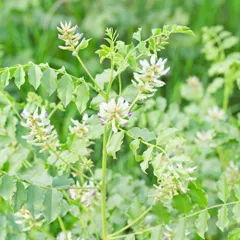Pneumonia according to Chinese Medicine
The information provided here is not a replacement for a doctor. You shouldn't use it for the purpose of self-diagnosing or self-medicating but rather so you can have a more informed discussion with a professional TCM practitioner.
Pneumonia factsheet
Possible causes and remedies:
Symptoms: Thirst Nausea Epigastrium fullness and five other symptoms
Recommended formula: Hao Qin Qing Dan Tang
Symptoms: Clump Phlegm Chest pain and seven other symptoms
Recommended formula: Xiao Xian Xiong Tang
In Chinese Medicine, pneumonia can be associated with eight so-called "patterns of disharmony". Chinese Medicine sees the body as a system, not a sum of isolated parts. A "pattern" is when the system's harmony is disrupted. It is not equivalent to the Western concept of "disease", as a matter of fact here pneumonia can be caused by eight different patterns.
To understand whether someone's pneumonia might be caused by a given pattern, one needs to look for signs and symptoms associated with the pattern beyond what one might typically experience from pneumonia alone. For instance when pneumonia is caused by the pattern Heat in Gall Bladder, patients also experience symptoms such as mild chills alternating with pronounced fever, bitter taste in the mouth, stifling sensation in the chest and spitting up bitter or sour fluids. Similarly, patients with Heat in Gall Bladder typically exhibit rapid (Shu) or wiry (Xian) pulses as well as a red tongue with thick coating, yellow coating.
We've listed below a description of the eight patterns associated with pneumonia so that you can start to get an understanding of the various possibilities according to Chinese Medicine.
Once identified, patterns are often treated using herbal formulas. Drinking herbal infusions is the most common remedy in Chinese Medicine, together with acupuncture. Here we detail below twenty six formulas that can help treat the various patterns associated with pneumonia, depending on which pattern fits your profile.
The eight "patterns of disharmony" associated with pneumonia
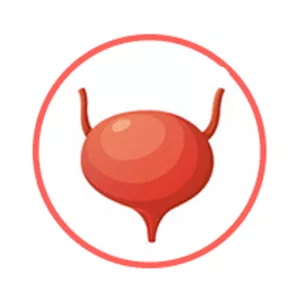
The Bladder is a so-called "Fu" Organ. Learn more about the Bladder in Chinese Medicine
Heat in Gall Bladder
Pulse type(s): Rapid (Shu), Wiry (Xian)
Tongue coating: Thick coating, Yellow coating
Tongue color: Red
Recommended herbal formula: Hao Qin Qing Dan Tang
Symptoms: Thirst Nausea Epigastrium fullness Bitter taste in the mouth Stifling sensation in the chest Spitting up bitter or sour fluids Mild chills alternating with pronounced fever Distention and pain in the chest and hypochondria
Pneumonia might be due to Heat in Gall Bladder if the condition is paired with typical pattern symptoms such as mild chills alternating with pronounced fever, bitter taste in the mouth, stifling sensation in the chest and spitting up bitter or sour fluids. Similarly, patients with Heat in Gall Bladder typically exhibit rapid (Shu) or wiry (Xian) pulses as well as a red tongue with thick coating, yellow coating.

The Lungs is a so-called "Zang" Organ. Learn more about the Lungs in Chinese Medicine
Phlegm Heat in the Lungs
Pulse type(s): Rapid (Shu), Slippery (Hua)
Tongue coating: Sticky coating, Yellow coating
Tongue shape: Swollen
Recommended herbal formula: Xiao Xian Xiong Tang
Symptoms: Clump Phlegm Chest pain Constipation Epigastric pain Clumping in the chest Bitter taste in the mouth Epigastric focal distention Focal distention of the chest Coughing of copious thick yellow sputum
Pneumonia might be due to Phlegm Heat in the Lungs if the condition is paired with typical pattern symptoms such as constipation, bitter taste in the mouth, coughing of copious thick yellow sputum and chest pain. Similarly, patients with Phlegm Heat in the Lungs typically exhibit rapid (Shu) or slippery (Hua) pulses as well as a tongue with sticky coating, yellow coating.

The Lungs is a so-called "Zang" Organ. Learn more about the Lungs in Chinese Medicine
Wind-Heat entering the Lungs
Pulse type(s): Rapid (Shu), Slippery (Hua)
Tongue coating: Yellow coating
Tongue color: Red
Recommended herbal formula: Wei Jing Tang
Symptoms: Slight fever Mild chest pain Dry and scaly skin Cough with foul-smelling sputum
Pneumonia might be due to Wind-Heat entering the Lungs if the condition is paired with typical pattern symptoms such as cough with foul-smelling sputum, slight fever, mild chest pain and dry and scaly skin. Similarly, patients with Wind-Heat entering the Lungs typically exhibit rapid (Shu) or slippery (Hua) pulses as well as a red tongue with yellow coating.

Arisaema With Bile (Dan Nan Xing) is the key herb for Qing Qi Hua Tan Wan, a formula used for Phlegm-Heat
Phlegm-Heat
Pulse type(s): Rapid (Shu), Slippery (Hua)
Tongue color: Red
Recommended herbal formula: Qing Qi Hua Tan Wan
Symptoms: Nausea Chest fullness Focal distention Coughing and wheezing with copious thick and yellow sputum
Pneumonia might be due to Phlegm-Heat if the condition is paired with typical pattern symptoms such as focal distention, chest fullness, nausea and coughing and wheezing with copious thick and yellow sputum. Similarly, patients with Phlegm-Heat typically exhibit rapid (Shu) or slippery (Hua) pulses as well as a red tongue.

The Liver is a so-called "Zang" Organ. Learn more about the Liver in Chinese Medicine
Lung Qi Deficiency and Liver Qi Stagnation
Pulse type(s): Empty (Xu), Tight (Jin)
Tongue coating: Thin white coating
Tongue color: Normal (light red), Pale
Recommended herbal formula: Xiao Chai Hu Tang
Symptoms: Coughing Dizziness Headaches Depression Moving pain Listlessness Hypochondrium fullness
Pneumonia might be due to Lung Qi Deficiency and Liver Qi Stagnation if the condition is paired with typical pattern symptoms such as coughing, hypochondrium fullness, dizziness and headaches. Similarly, patients with Lung Qi Deficiency and Liver Qi Stagnation typically exhibit empty (Xu) or tight (Jin) pulses as well as a normal (light red), pale tongue with thin white coating.
Read more about Lung Qi Deficiency and Liver Qi Stagnation here

Kansui Roots (Gan Sui) is the key herb for Shi Zao Tang, a formula used for Phlegm-Fluids in the chest and hypochondrium
Phlegm-Fluids in the chest and hypochondrium
Pulse type(s): Deep (Chen), Wiry (Xian)
Tongue coating: Thin white coating
Recommended herbal formula: Shi Zao Tang
Symptoms: Vertigo Headaches Dry heaves Shortness of breath Hard focal distention in the epigastrium Cough with pain in the chest and hypochondria
Pneumonia might be due to Phlegm-Fluids in the chest and hypochondrium if the condition is paired with typical pattern symptoms such as cough with pain in the chest and hypochondria, hard focal distention in the epigastrium, dry heaves and shortness of breath. Similarly, patients with Phlegm-Fluids in the chest and hypochondrium typically exhibit deep (Chen) or wiry (Xian) pulses as well as a tongue with thin white coating.
Read more about Phlegm-Fluids in the chest and hypochondrium here

The Lungs is a so-called "Zang" Organ. Learn more about the Lungs in Chinese Medicine
Lung Yin Deficiency
Pulse type(s): Rapid (Shu), Empty (Xu), Floating (Fu)
Tongue coating: Complete absence of coating
Tongue color: Red
Recommended herbal formulas: Yang Yin Qing Fei Tang, Qing Zao Jiu Fei Tang, Bu Fei E Jiao Tang, Jiu Xian San, Bai He Gu Jin Tang, Mai Men Dong Tang
Symptoms: Insomnia Dry cough Dry mouth Tiredness Thin chest Weak voice Dry throat Malar flush Hoarse voice Night sweats Tickly throat Aversion to speak Hot palms and soles Thin body lacking strength Feeling of heat in the afternoon Low-grade fever in the afternoon
Exterior Heat and Dryness can invade the Lungs and exhausts the Body Fluids. If it is not dealt with for a long time, it leads to Lung Yin Deficiency. Typical manifestations are dry cough, throat and mouth, aversion to speak as well as Hoarse voice.
Other factors can cause this pattern such as the Deficiency of Kidneys or Stomach Yin as well as prolonged Lung Qi Deficiency due to excessive smoking or use of voice.
Empty-Heat symptoms appear if the Lung Yin Deficiency condition is not treated for a while. Patients can feel malar flush, low-grade fever as well as Heat in the palms and chest, especially in the evenings.
Lung Yin Deficiency generally occurs in middle-aged and elderly patients as a result of overwork, irregular diet and smoking. However, it can also occur in a child after whooping cough.

The Stomach is a so-called "Fu" Organ. Learn more about the Stomach in Chinese Medicine
Stomach Yin Deficiency
Pulse type(s): Empty (Xu), Floating (Fu)
Tongue coating: Partial absence of coating
Tongue color: Red
Recommended herbal formulas: Mai Men Dong Tang, Yi Wei Tang Shen Ling Bai Zhu San, Mai Men Dong Tang, Yi Wei Tang
Symptoms: Thirst Retching Dry mouth Hiccuping Dry throat Dry stools Constipation Poor appetite Slight thirst Bleeding gums Epigastic pain Epigastric pain No desire to eat Feeling of hunger Feeling of fullness Hot palms and soles Desire to drink in small sips Feeling of heat in the afternoon Slight feeling of fullness after eating
The Stomach is responsible for receiving foods and drinks, ripening them and sending them to the Spleen for further digestion. Therefore, the Stomach is the origin of Body Fluids. It is also an Organ that likes Cold and Dampness which are both Yin characteristics. Stomach Yin Deficiency harms this functions and cause Dryness and Heat. As a result, symptoms such as thirst, dry stools, dry mouth and dry throat appear. It also cause the tongue coating to fall off.
Due to lack of Body Fluids, there is constipation with dry stools. Retching and hiccups may also occur as Stomach's Qi downward function is impaired.
If the Yin Deficiency situation last for a long period of time, it can potentially develop Empty-Heat. It's typical manifestations are often quite mild and appears only in the afternoon or evening, such the mild fever or feeling of heat. The patients experiences thirst or hunger but there is no desire to drink or eat, or they only drink in small sips. They also prefer warm liquids and their appetite is poor.
The twenty six herbal formulas that might help with pneumonia



The top herbs in Mai Men Dong Tang are Dwarf Lilyturf Roots (Mai Dong), Ginseng (Ren Shen) and Rice Sprouts (Jing Mi)
Mai Men Dong Tang
Source date: 220 AD
Number of ingredients: 6 herbs
Key actions: Nourishes the Stomach. Generates Body Fluids. Directs Rebellious Qi downward.
Why might Mai Men Dong Tang help with pneumonia?
Because it is a formula often recommended to help with the patterns Lung Yin Deficiency and Stomach Yin Deficiency which are sometimes associated with pneumonia. If any of these patterns look like something you might suffer from, this formula might help (although please seek confirmation with a professional practitioner beforehand).


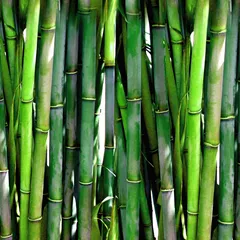
The top herbs in Hao Qin Qing Dan Tang are Sweet Wormwood Herbs (Qing Hao), Baikal Skullcap Roots (Huang Qin) and Bamboo Shavings (Zhu Ru)
Hao Qin Qing Dan Tang
Source date: Qing Dynasty
Number of ingredients: 10 herbs
Key actions: Clears Heat and relieves acute conditions of the Gallbladder. Relieves acute Damp-Heat syndromes. Resolves Phlegm. Harmonizes the Stomach.
Why might Hao Qin Qing Dan Tang help with pneumonia?
Because it is a formula often recommended to help treat Heat in Gall Bladder, a pattern sometimes associated with pneumonia. If it looks like you might suffer from Heat in Gall Bladder, this formula might help (although please seek confirmation with a professional practitioner beforehand).

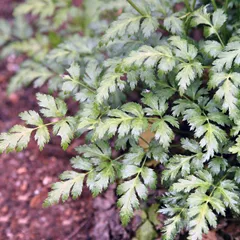
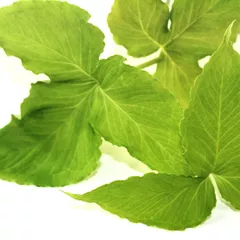
The top herbs in Xiao Xian Xiong Tang are Snake Gourds (Gua Lou), Goldthread Rhizomes (Huang Lian) and Crow-Dipper Rhizomes (Ban Xia)
Xiao Xian Xiong Tang
Source date: 220 AD
Number of ingredients: 3 herbs
Key actions: Clears Heat. Transforms Phlegm. Expands the chest. Dissipates clumps.
Why might Xiao Xian Xiong Tang help with pneumonia?
Because it is a formula often recommended to help treat Phlegm Heat in the Lungs, a pattern sometimes associated with pneumonia. If it looks like you might suffer from Phlegm Heat in the Lungs, this formula might help (although please seek confirmation with a professional practitioner beforehand).



The top herbs in Wei Jing Tang are Common Reed Rhizomes (Lu Gen), Job's Tears (Yi Yi Ren) and Wax Gourd Seeds (Dong Gua Zi)
Wei Jing Tang
Source date: 627 AD
Number of ingredients: 4 herbs
Key actions: Clears heat from the Lungs. Transforms Phlegm. Drives out Blood-Stagnation. Discharges pus.
Why might Wei Jing Tang help with pneumonia?
Because it is a formula often recommended to help treat Wind-Heat entering the Lungs, a pattern sometimes associated with pneumonia. If it looks like you might suffer from Wind-Heat entering the Lungs, this formula might help (although please seek confirmation with a professional practitioner beforehand).



The top herbs in Qing Qi Hua Tan Wan are Arisaema With Bile (Dan Nan Xing), Baikal Skullcap Roots (Huang Qin) and Snake Gourd Seeds (Gua Lou Ren)
Qing Qi Hua Tan Wan
Source date: 1584 AD
Number of ingredients: 8 herbs
Key actions: Clears Heat. Transforms Phlegm. Directs Rebellious Qi downwards. Stops coughing.
Why might Qing Qi Hua Tan Wan help with pneumonia?
Because it is a formula often recommended to help treat Phlegm-Heat, a pattern sometimes associated with pneumonia. If it looks like you might suffer from Phlegm-Heat, this formula might help (although please seek confirmation with a professional practitioner beforehand).



The top herbs in Xiao Chai Hu Tang are Bupleurum Roots (Chai Hu), Baikal Skullcap Roots (Huang Qin) and Crow-Dipper Rhizomes (Ban Xia)
Xiao Chai Hu Tang
Source date: 220 AD
Number of ingredients: 7 herbs
Key actions: Treats the Lesser Yang Channels (Gallbladder and Triple Warmer). Regulates the Liver and Spleen functions. Addresses combined Yin-Yang symptoms of External and Internal, Excess and Deficiency, and Hot and Cold.
Why might Xiao Chai Hu Tang help with pneumonia?
Because it is a formula often recommended to help treat Lung Qi Deficiency and Liver Qi Stagnation, a pattern sometimes associated with pneumonia. If it looks like you might suffer from Lung Qi Deficiency and Liver Qi Stagnation, this formula might help (although please seek confirmation with a professional practitioner beforehand).



The top herbs in Shi Zao Tang are Kansui Roots (Gan Sui), Genkwa Flowers (Yuan Hua) and Peking Spurge Roots (Jing Da Ji)
Shi Zao Tang
Source date: 220 AD
Number of ingredients: 4 herbs
Key actions: Purges and drives out Phlegm-Fluids.
Why might Shi Zao Tang help with pneumonia?
Because it is a formula often recommended to help treat Phlegm-Fluids in the chest and hypochondrium, a pattern sometimes associated with pneumonia. If it looks like you might suffer from Phlegm-Fluids in the chest and hypochondrium, this formula might help (although please seek confirmation with a professional practitioner beforehand).
Ling Jiao Gou Teng Tang
Source date: Qing dynasty
Number of ingredients: 10 herbs
Key actions: Cools the Liver. Extinguishes Wind. Increases Fluids. Relaxes the sinews.
Why might Ling Jiao Gou Teng Tang help with pneumonia?
Because it is a formula often recommended to help treat , a pattern sometimes associated with pneumonia. If it looks like you might suffer from , this formula might help (although please seek confirmation with a professional practitioner beforehand).



The top herbs in Ma Huang Tang are Ephedra (Ma Huang), Cinnamon Twigs (Gui Zhi) and Apricot Seeds (Xing Ren)
Ma Huang Tang
Source date: 220 AD
Number of ingredients: 4 herbs
Key actions: Releases exterior cold. Treats wheezing.
Why might Ma Huang Tang help with pneumonia?
Because it is a formula often recommended to help treat , a pattern sometimes associated with pneumonia. If it looks like you might suffer from , this formula might help (although please seek confirmation with a professional practitioner beforehand).



The top herbs in Bei Mu Gua Lou San are Sichuan Fritillary Bulbs (Chuan Bei Mu), Snake Gourds (Gua Lou) and Snake Gourd Roots (Tian Hua Fen)
Bei Mu Gua Lou San
Source date: 1732 AD
Number of ingredients: 6 herbs
Key actions: Moistens the Lungs. Clears Heat. Regulates Qi. Resolve Phlegm. Stop coughing.
Why might Bei Mu Gua Lou San help with pneumonia?
Because it is a formula often recommended to help treat , a pattern sometimes associated with pneumonia. If it looks like you might suffer from , this formula might help (although please seek confirmation with a professional practitioner beforehand).



The top herbs in Yin Qiao San are Honeysuckle Flowers (Jin Yin Hua), Forsythia Fruits (Lian Qiao) and Platycodon Roots (Jie Geng)
Yin Qiao San
Source date: 1798 AD
Number of ingredients: 10 herbs
Key actions: Disperses Wind Heat. Clears Heat. Resolves Toxicity.
Why might Yin Qiao San help with pneumonia?
Because it is a formula often recommended to help treat , a pattern sometimes associated with pneumonia. If it looks like you might suffer from , this formula might help (although please seek confirmation with a professional practitioner beforehand).
Ge Geng Huang Qin Huang Lian Tang
Why might Ge Geng Huang Qin Huang Lian Tang help with pneumonia?
Because it is a formula often recommended to help treat , a pattern sometimes associated with pneumonia. If it looks like you might suffer from , this formula might help (although please seek confirmation with a professional practitioner beforehand).



The top herbs in Sang Ju Yin are Mulberry Leaves (Sang Ye), Chrysanthemum Flowers (Ju Hua) and Forsythia Fruits (Lian Qiao)
Sang Ju Yin
Source date: 1798 AD
Number of ingredients: 8 herbs
Key actions: Disperses Wind. Stops coughing by invigorating Lung Qi. Clears Heat.
Why might Sang Ju Yin help with pneumonia?
Because it is a formula often recommended to help treat , a pattern sometimes associated with pneumonia. If it looks like you might suffer from , this formula might help (although please seek confirmation with a professional practitioner beforehand).



The top herbs in Qing Zao Jiu Fei Tang are Mulberry Leaves (Sang Ye), Gypsum (Shi Gao) and Dwarf Lilyturf Roots (Mai Dong)
Qing Zao Jiu Fei Tang
Source date: 1658 AD
Number of ingredients: 9 herbs
Key actions: Clears dryness. Moistens the Lungs.
Why might Qing Zao Jiu Fei Tang help with pneumonia?
Because it is a formula often recommended to help treat , a pattern sometimes associated with pneumonia. If it looks like you might suffer from , this formula might help (although please seek confirmation with a professional practitioner beforehand).



The top herbs in Huang Lian Jie Du Tang are Goldthread Rhizomes (Huang Lian), Baikal Skullcap Roots (Huang Qin) and Phellodendron Bark (Huang Bo)
Huang Lian Jie Du Tang
Why might Huang Lian Jie Du Tang help with pneumonia?
Because it is a formula often recommended to help treat , a pattern sometimes associated with pneumonia. If it looks like you might suffer from , this formula might help (although please seek confirmation with a professional practitioner beforehand).



The top herbs in Ma Huang Xi Xin Fu Zi Tang are Ephedra (Ma Huang), Prepared Aconite (Zhi Fu Zi) and Wild Ginger (Xi Xin)
Ma Huang Xi Xin Fu Zi Tang
Source date: 220 AD
Number of ingredients: 3 herbs
Key actions: Tonifes the Yang. Releases the Exterior.
Why might Ma Huang Xi Xin Fu Zi Tang help with pneumonia?
Because it is a formula often recommended to help treat , a pattern sometimes associated with pneumonia. If it looks like you might suffer from , this formula might help (although please seek confirmation with a professional practitioner beforehand).



The top herbs in Chai Hu Gui Jiang Tang are Bupleurum Roots (Chai Hu), Cinnamon Twigs (Gui Zhi) and Baikal Skullcap Roots (Huang Qin)
Chai Hu Gui Jiang Tang
Source date: 220 AD
Number of ingredients: 7 herbs
Key actions: Harmonizes and releases the Lesser Yang. Removes Stagnation . Warms the Interior. Dispels Cold.
Why might Chai Hu Gui Jiang Tang help with pneumonia?
Because it is a formula often recommended to help treat , a pattern sometimes associated with pneumonia. If it looks like you might suffer from , this formula might help (although please seek confirmation with a professional practitioner beforehand).



The top herbs in Zhu Ye Shi Gao Tang are Gypsum (Shi Gao), Lophatherum Herbs (Dan Zhu Ye) and Ginseng (Ren Shen)
Zhu Ye Shi Gao Tang
Source date: 220 AD
Number of ingredients: 7 herbs
Key actions: Clears Heat. Generates Body Fluids. Strengthens and regulates Qi.
Why might Zhu Ye Shi Gao Tang help with pneumonia?
Because it is a formula often recommended to help treat , a pattern sometimes associated with pneumonia. If it looks like you might suffer from , this formula might help (although please seek confirmation with a professional practitioner beforehand).



The top herbs in Zhi Zi Chi Tang are Cape Jasmine Fruits (Zhi Zi) and Fermented Soybeans (Dan Dou Chi)
Zhi Zi Chi Tang
Source date: 220 AD
Number of ingredients: 2 herbs
Key actions: Clears Heat. Alleviates restlessness and irritability.
Why might Zhi Zi Chi Tang help with pneumonia?
Because it is a formula often recommended to help treat , a pattern sometimes associated with pneumonia. If it looks like you might suffer from , this formula might help (although please seek confirmation with a professional practitioner beforehand).
Huang Lian Jiao Du Tang
Why might Huang Lian Jiao Du Tang help with pneumonia?
Because it is a formula often recommended to help treat , a pattern sometimes associated with pneumonia. If it looks like you might suffer from , this formula might help (although please seek confirmation with a professional practitioner beforehand).



The top herbs in Xie Bai San are Mulberry Bark (Sang Bai Pi), Goji Tree Root Bark (Di Gu Pi) and Liquorice (Gan Cao)
Xie Bai San
Source date: 1119 AD
Number of ingredients: 4 herbs
Key actions: Drains Heat from the Lungs . Calms wheezing.
Why might Xie Bai San help with pneumonia?
Because it is a formula often recommended to help treat , a pattern sometimes associated with pneumonia. If it looks like you might suffer from , this formula might help (although please seek confirmation with a professional practitioner beforehand).



The top herbs in Qing Shu Yi Qi Tang are American Ginseng (Xi Yang Shen), Watermelons (Xi Gua) and Lotus Stems (He Geng)
Qing Shu Yi Qi Tang
Source date: 1852 AD
Number of ingredients: 10 herbs
Key actions: Clears summerheat. Augments the Qi. Nourishes the Yin. Generates Body Fluids.
Why might Qing Shu Yi Qi Tang help with pneumonia?
Because it is a formula often recommended to help treat , a pattern sometimes associated with pneumonia. If it looks like you might suffer from , this formula might help (although please seek confirmation with a professional practitioner beforehand).



The top herbs in Huang Qi Gui Zhi Wu Wu Tang are Milkvetch Roots (Huang Qi), Cinnamon Twigs (Gui Zhi) and White Peony Roots (Bai Shao)
Huang Qi Gui Zhi Wu Wu Tang
Source date: 220 AD
Number of ingredients: 5 herbs
Key actions: Augments the Qi. Warms and harmonizes the channels. Unblocks painful obstruction .
Why might Huang Qi Gui Zhi Wu Wu Tang help with pneumonia?
Because it is a formula often recommended to help treat , a pattern sometimes associated with pneumonia. If it looks like you might suffer from , this formula might help (although please seek confirmation with a professional practitioner beforehand).



The top herbs in Shi Gao Tang are Gypsum (Shi Gao), Ephedra (Ma Huang) and Fermented Soybeans (Dan Dou Chi)
Shi Gao Tang
Source date: 752 AD
Number of ingredients: 7 herbs
Key actions: Clears Heat and resolves Toxicity. Releases the Exterior.
Why might Shi Gao Tang help with pneumonia?
Because it is a formula often recommended to help treat , a pattern sometimes associated with pneumonia. If it looks like you might suffer from , this formula might help (although please seek confirmation with a professional practitioner beforehand).



The top herbs in Sha Shen Mai Men Dong Tang are Glehnia Roots (Bei Sha Shen), Dwarf Lilyturf Roots (Mai Dong) and Mulberry Leaves (Sang Ye)
Sha Shen Mai Men Dong Tang
Source date: 1798 AD
Number of ingredients: 7 herbs
Key actions: Clears and nourishes the Lungs and Stomach. Generates Body Fluids and moistens Dryness.
Why might Sha Shen Mai Men Dong Tang help with pneumonia?
Because it is a formula often recommended to help treat , a pattern sometimes associated with pneumonia. If it looks like you might suffer from , this formula might help (although please seek confirmation with a professional practitioner beforehand).


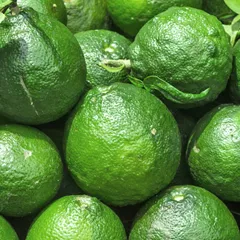
The top herbs in Xiao Cheng Qi Tang are Rhubarb (Da Huang), Houpu Magnolia Bark (Hou Pu) and Immature Bitter Oranges (Zhi Shi)
Xiao Cheng Qi Tang
Source date: 220 AD
Number of ingredients: 3 herbs
Key actions: Moderately purges Heat accumulation. Circulates Qi in the Middle .
Why might Xiao Cheng Qi Tang help with pneumonia?
Because it is a formula often recommended to help treat , a pattern sometimes associated with pneumonia. If it looks like you might suffer from , this formula might help (although please seek confirmation with a professional practitioner beforehand).
Symptoms related to pneumonia
Bitter taste in the mouth Thirst Nausea Constipation Epigastric pain Headaches Dry mouth Dry throat Hot palms and soles Feeling of heat in the afternoon




